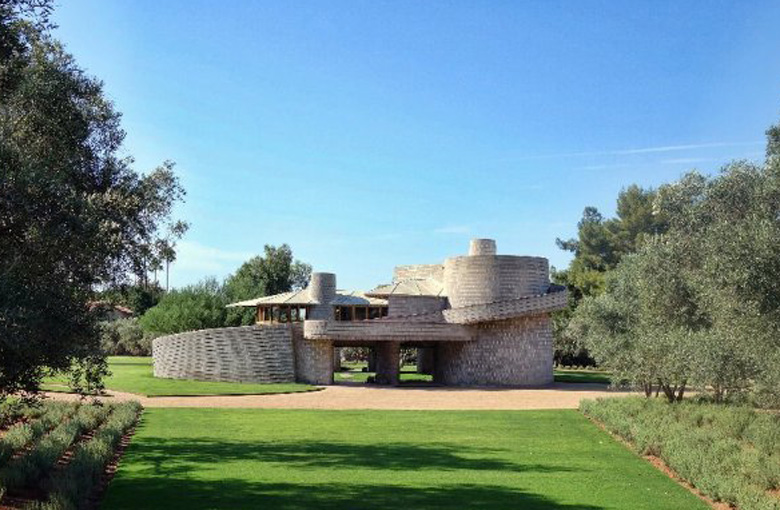
Commentary: Phoenix needs a sense of place
Plans to open the David and Gladys Wright House in the Phoenix neighborhood of Arcadia as a museum have spurred debate. Professor of Real Estate Mark Stapp comments on the significance of the property, designed by architect Frank Lloyd Wright, and its importance in establishing Phoenix as a city with interesting neighborhoods -- in short, a city where talented people and successful businesses might want to locate.
By Mark Stapp, Fred E. Taylor | Professor of Real Estate Director, Master of Real Estate Development
As a resident of Arcadia, I’ve been following the debate swirling around the David and Gladys Wright House. The new owner, who saved the historic residence from demolition two years ago, established a foundation for its management and has applied for a special permit to conduct ticket tours, education and cultural programs and open a cafe and bookstore.
Neighbors are crying "commercialization," but this is an issue that transcends Arcadia or any one neighborhood. As places mature, changes occur. Metro areas are developed for perpetuity; by comparison, residents come and go in relatively short time periods. Metro Phoenix is an adolescent metropolitan area struggling to get ahead in a highly competitive economic-development landscape. We are striving against the likes of Denver, Austin, Dallas, Salt Lake City and Seattle for the prize of high-wage jobs. But we cannot compete on the cost of doing business alone.
If we are simply the low-cost provider, we reduce ourselves to a commodity, with all of the accompanying vulnerability. Instead, we need to build an authentic, interesting, culturally rich, locally focused, diversified community. To compete as a metro area, we need to be a place where employers can find quality employees. Being affordable is important but only to a point.
If Phoenix is bland, inauthentic and without contextually designed, culturally relevant, locally focused places, it will not attract the talent employers seek — even if it is the cheapest place to do business. Unless all we want are low-wage jobs, we must create interesting places to live, work and play so that young talent and quality employers will come and stay. Community-development professionals coined a now overused term: "place making." It means to deliberately create interesting, desirable places.
Great neighborhoods correlate with many locational attributes and characteristics. Gertrude Stein, when referring to Oakland, said "there is no there there." The witticism has been used to imply a lack of character, meaningful identity and culture. What we think of as a place is no single characteristic; it is a combination of characteristics that make a place special.
These may be natural, man-made or a combination. How we perceive, interact with and remember a place — the human experience in a landscape — is what makes it magnetic. These social and cultural elements of society combine to make an identity for a particular piece of land. Another way to look at sense of place is contrast. Places like strip malls have little sense of place because they more or less look similar and often have no name.
People don’t long to spend any time there or write anything about them. The places that evoke a strong sense of place have an identity and character recognized immediately by a visitor and valued deeply by residents. Our political leaders need to look beyond the demands of a few residents and realize that the David and Gladys Wright House could be one of our special places: a culturally rich asset that would contribute to the making of Phoenix distinctive, desirable and economically competitive. This is not crass commercialization; this is respect for priceless culture.
Property values in the neighborhood will increase as a result. You can't have it both ways. You can’t talk about securing higher wage-earning jobs and fail to support the cultural infrastructure needed to attract them. The David and Gladys Wright House is an important precedent. Let us learn how to integrate it into our city as a cultural treasure that belongs to all.
First published in The Arizona Republic, August 3, 2015.
Latest news
- Pop culture is key to effective teaching
How a management and entrepreneurship professor uses Ted Lasso and other pop-culture touchstones…
- Artificial intelligence in business master's degree helps Nathan Merriman combine business strategy with technology
Nathan Merriman (MS-AIB '25) had been working in business for a few years when he learned about…
- How the Executive MBA empowered Scott Gates to be a mission-driven leader
Scott Gates (BS Marketing '04, Executive MBA '15) had a very positive experience during his…